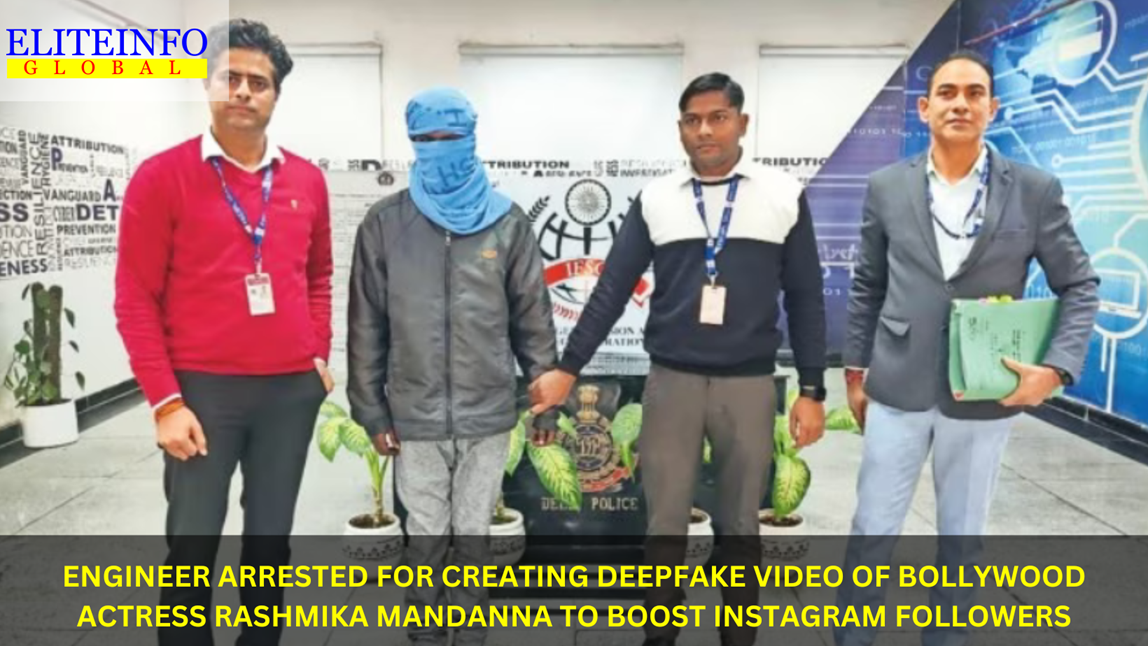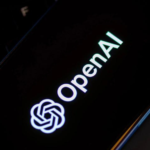The Delhi Police has arrested an engineer named Eemani Naveen from Andhra Pradesh’s Guntur for creating a deepfake video of Bollywood actress Rashmika Mandanna.
Details
Naveen allegedly created the video to boost his followers on Instagram. The Intelligence Fusion and Strategic Operations (IFSO) Unit of Special Cell, Delhi Police arrested Naveen after analyzing around 500 social media accounts. Deputy Commissioner of Police, IFSO Unit, Hemant Tiwari said that Naveen used to run a fan page for Rashmika Mandanna and also created two more fan pages for another two noted celebrities. The police said that he got scared and deleted the post after learning that his video has triggered a nationwide controversy. The video last year drew strong reactions from several personalities. Prime Minister Narendra Modi had also expressed concerns regarding the misuse of the technology. This and more similar deepfake videos of famous personalities, including cricket legend Sachin Tendulkar and PM Modi himself, prompted the government to issue an advisory. Earlier this month, the government also announced that it will notify new IT rules to curb the deepfake menace over non-compliance of the advisory.

The accused, Naveen, completed his B.Tech from Adhi College of Engineering and Technology in 2021. He also pursued a digital certification course in Digital Marketing from Google Garage in 2019, said the police.
“He is a big fan of the actress (Mandanna) and was running a fan page in her name. He created two more fan pages of South-based actors and he had been managing the fan pages and uploading clean and original videos on them. Followers of his other two fan pages were in lakhs but that of Mandanna was only 90,000,” said DCP (IFSO) Hemant Tiwari.
In order to increase the followers on that page, Naveen allegedly created the deepfake video. “Due to this video, the following of his page increased to more than a lakh in two weeks,” said the DCP.
How deepfakes are created?
Deepfakes are created using machine learning algorithms, specifically deep learning. The process typically involves a five-step process, including data collection, data preparation, model training, model conversion, and the creation of the deepfake. To create a effective deepfake, a gaming-type GPU and significant graphics-editing and audio-dubbing skills are needed. The software for creating deepfakes is free and open source, it requires expertise and a duration of several weeks to months to create the content.
The technology for creating deepfakes is constantly increasing, and there are concerns about the potential misuse of this technology, such as in nonconsensual pornography, fake alibis, extortion, or terrorism. Efforts are underway to improve the detection of deepfake technology and develop tools to defeat its misuse.
Also Read: Exploring the World of Deepfake AI: Uses, Limitations, Prevention and Legalities
How deepfake AI works?
Deepfake AI uses machine learning and deep learning techniques to create synthetic media, such as images and videos, that can deceive viewers and listeners. The process involves several steps and techniques to create the convincing deepfakes:
- Data Collection: Deepfake algorithms require large amounts of data, such as images, videos, or audio recordings, to learn and generate realistic synthetic media
- Data Preprocessing: The collected data is pre-processed, which may involve resizing, cropping, or normalizing the input to ensure consistency and improve the training process
- Model Training: Deepfake algorithms are trained using deep learning models, such as autoencoders, generative adversarial networks (GANs), or recurrent neural networks (RNNs). These models are designed to learn complex patterns and representations from the pre-processed data.
- Media Generation: Once the model is trained, it can generate new synthetic media by combining the learned patterns and representations with new input data. This results in deepfake images, videos, or audio recordings which can be difficult to distinguish from genuine content
- Post-Processing: The generated deepfake media may require additional processing, such as applying makeup, adding background effects, or adjusting audio to make the final result more convincing and engaging
Deepfake AI has various applications, including entertainment, marketing and customer support, but it also poses significant risks, such as spreading false information and undermining trust in digital content.










